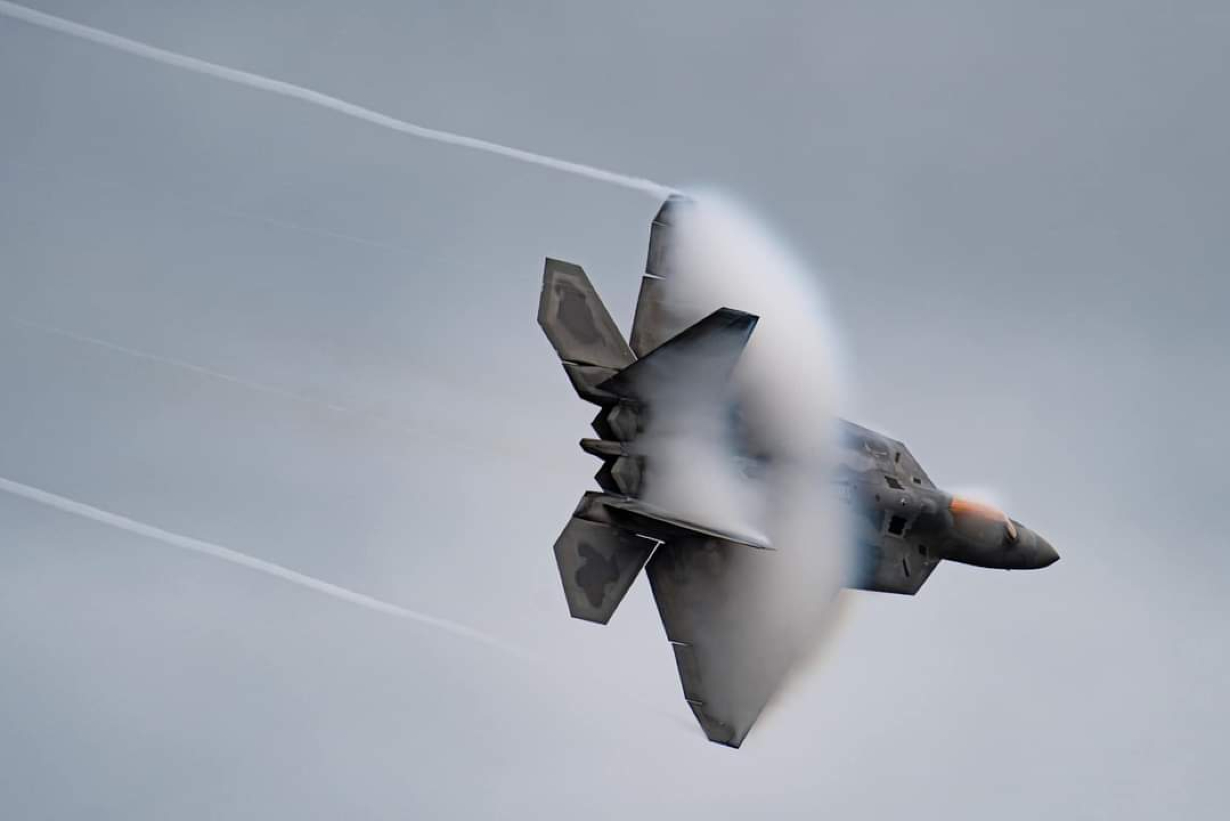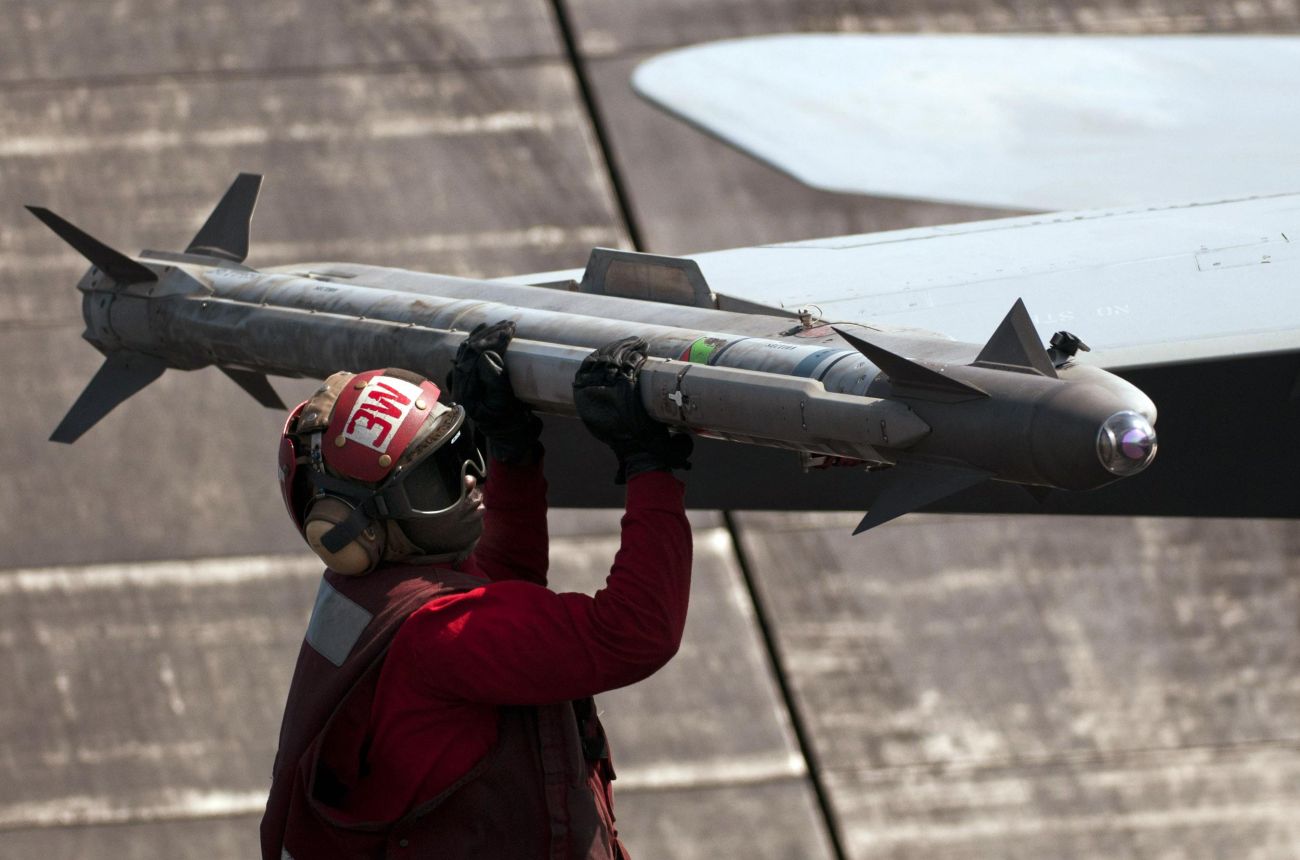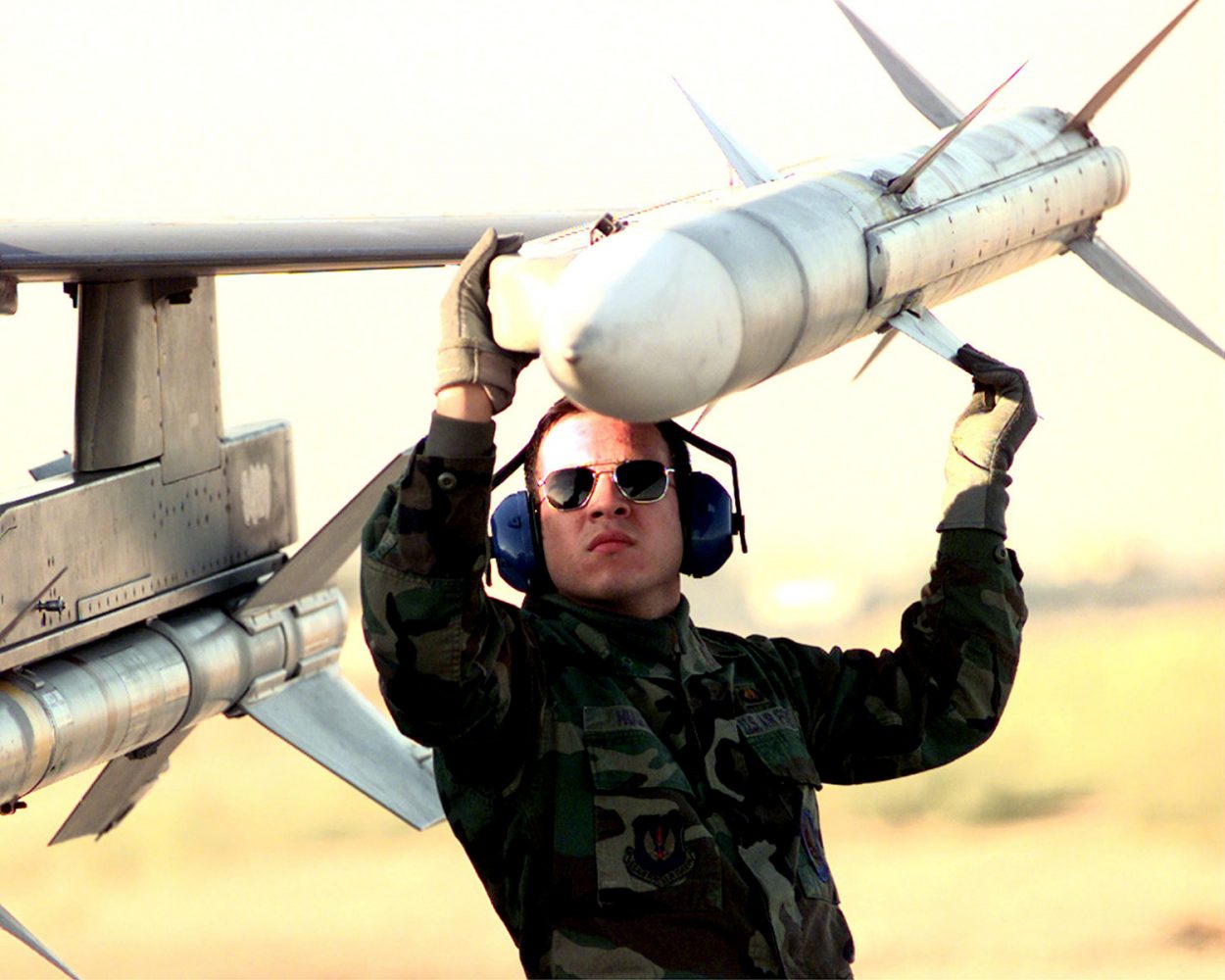Analysis By Air Marshal Anil Chopra (retd)
The latest use of an Air-to-Air missile (AAM) was by the US Northern Command F-22 Raptor fighter jet launching an AIM-9X Sidewinder missile to take down a car-sized object flying above Alaska on February 10.
The same combination of jet and missile destroyed the Chinese balloon on February 4. While there have been a few air combat engagements in the initial days of the war in Ukraine, missile usage is not clear.
AAM began its operational journey in Vietnam War. They also saw significant use in the Arab-Israeli wars and the Iran-Iraq war. Pakistan Air Force’s Atlantique was shot down by an IAF MiG-21 in 1999 and, more recently, during air combat in response to the Balakot strike.
Air-to-Air Missile Dynamics
AAMs are typically powered by rocket motors, usually using solid fuel. Ramjet engines, as in Meteor missiles, are now becoming popular, as they allow for maintaining higher average speed across their engagement envelope.
The close-combat missiles (CCM) “dog-fight” within visual range weapons have shorter ranges of below 16 kilometers and are designed for agility rather than range. Most use infrared guidance.
More modern infrared-guided missiles can detect the heat of an aircraft’s skin, warmed by airflow friction, in addition to the fainter heat signature of the engine when the aircraft is seen from the side or head-on. This, combined with more excellent maneuverability, gives them an all-aspect capability.
The pilot can also use a helmet-mounted sight (HMS) to slew the missile seeker’s head towards the target for an off-boresight launch. The medium and long-range missiles are beyond visual range (BVR) AAMs. These use active or semi-active radar guidance, sometimes combined with inertial guidance.
Passive anti-radiation homing missiles could be used against AEW&C aircraft. Most missiles have a conventional explosive blast, fragmentation, or continuous rod warheads that detonate on impact or through a proximity fuse.
IR flares may deceive the infrared missiles and chaff and electronic countermeasures a radar-guided missile.
The initial AAMs came around 1956 when US aircraft began equipping with AIM-4 Falcon, AIM-7 Sparrow, and AIM-9 Sidewinder. The Soviets introduced the K-5 missile in 1957. Ever since AAMs have improved in both agility and range.

AAM Combat Engagement Statistics
On June 17, 1965, two US Navy F-4 Phantom aircrew recorded the first confirmed US air-to-air kills of the Vietnam War, shooting down two North Vietnamese MiG-17s using AAMs.
F-4 Phantom is reported to have had the highest aerial missile kills at 306, which included 151 in Vietnam, 86 in Arab-Israeli wars, and 68 in the Iran-Iraq war (1980-88).
MiG-21s shot 240 aircraft with AAMs, including 85 in Vietnam, 82 in the Arab-Israel wars, 32 in Iran-Iraq War, and six in the 1971 Indo-Pak War. Among the others, the F-14 Tomcat has had 135 AAM kills (130 in the Iraq-Iran war); F-15 had 102, and the F-16s had 76.
In January 1981, an Iranian F-14 flown by Asadullah Adeli shot a Phoenix missile at a formation of three MiG-23s targeting the middle aircraft in close formation, destroying all three with a single missile, a record.
The AIM-9 is one of the oldest, lowest cost, and most successful AAMs, with an estimated 270 aircraft kills in its history. The modern fighters that have yet to have AAM combat kills are F-22 Raptor, Rafale, Tornado ADV, Saab Gripen, Eurofighter Typhoon, J-10, MiG-31, Su-30, Su-33, Su-35, JF-17, LCA, among others.
In April 2021, a US Air Force F-15C Eagle fighter claimed to have fired the longest known air-to-air “kill” shot in an air test. The fighter fired an AIM-120D Advanced Medium-Range Air-to-Air Missile (AMRAAM) at a BQ-167 target drone.
The exact range was not revealed due to operational secrecy. The base AIM-120 version first entered service in the early 1990s.
AIM-9 Sidewinder
AIM-9 Sidewinder (Air Intercept Missile) short-range AAM entered service with the US Navy in 1956 and later the US Air Force in 1964. Since then, it has been significantly upgraded, and its latest variants remain standard equipment in most Western-aligned air forces.

Americans claim that the Soviet K-13 was a reverse-engineered copy of the AIM-9B and was widely adopted by several nations. Originally it had an infrared seeker head and was used in tail-chase mode.
The initial success rate in the Vietnam War was low. AIM-9L all-aspect variant proved much more effective in the Falklands War and the Bekaa Valley in Lebanon.
The newer variants include the AIM-95 Agile and SRAAM. The Sidewinder is the most widely used air-to-air missile in the West, with more than 110,000 missiles produced for the US and 27 other nations, of which perhaps one percent have been used in combat.
Boeing won a contract in March 2010 to support Sidewinder operations through to 2055, guaranteeing that the weapons system will remain in operation until at least that date. The Russian equivalents, K-13, R-60, and R-73, also have an excellent track record.
Modern AAM Statistics
The Russian Vympel R-37 is a hypersonic air-to-air missile with a very long range. It is designed to shoot down tankers, AWACS, and other C4ISTAR aircraft while keeping the launch platform out of the range of any fighters that might be protecting the target.
According to Janes, there could be two variants, the R-37, and the R-37M; the latter is conceived as having a jettisonable rocket booster that increases the range to “300–400 km”. It is also considered the fastest at over Mach 5 speed.
AIM-120 Advanced Medium-Range Air-to-Air Missile (AMRAAM) is an American beyond-visual-range AAM that employs active transmit-receive radar guidance instead of semi-active receive-only radar guidance.
It is a fire-and-forget weapon. Manufactured by Raytheon, its latest variant, AIM-120D, with speeds up to Mach 4, costs over a million dollars. Over 14,000 missiles have been produced.

The Norwegian Advanced Surface-to-Air Missile System (NASAMS) is a ground-based air-defense system using six AMRAAMs launching from canisters. AMRAAM-ER is the extended-range variant of the same. Raytheon has proposed an air-launched adaptation of the missile called AMRAAM-AXE, or Air-launched Extended Envelope.
The US Air Force plans to eventually replace the AMRAAM with the Lockheed Martin AIM-260 Joint Advanced Tactical Missile (JATM), a longer-range air-to-air missile expected to better compete with China’s PL-15 missile. This program differs from the AMRAAM-AXE. The AIM-260 program began in 2017. Around 30 Full-Scale Aerial Target drone tests had already been conducted.
The initial operational capability (IOC) is expected in 2023. The AIM-260 production is expected to overtake AIM-120 output by 2026. The missile is similar in dimensions to the AIM-120.
Triple Target Terminator (T3) is DARPA’s advanced weapons initiative awarded to Boeing and Raytheon. The long-range missile can engage enemy aircraft, cruise missiles, and air defense targets. T3 will be designed for internal carriage on stealth aircraft like the F-35, F-22, and F-15SE or externally on fighters, bombers, and UAVs.
The missile will likely be equipped with multi-mode seeker and network-centric data links, providing high target discrimination, kinetic network-centric applications, and human-in-the-loop control employment.
An advanced multi-purpose warhead will be required to engage a wide range of targets with maximum lethality. In parallel, the US Air Force Research Laboratory (AFRL) is also examining new technologies for a future air/air weapon known as ‘DRADM.’
The Meteor is a European active radar-guided BVR AAM developed and manufactured by MBDA. It can also engage small targets such as UAVs and cruise missiles in a heavy electronic countermeasures (ECM) environment with a maximum range of around 180 km.
It flies at Mach 4, and the solid-fueled ramjet motor provides the missile with thrust and mid-course acceleration to target intercept. A two-way data link enables the launch aircraft to provide mid-course target updates or retargeting, including data from off-board third parties.
According to MBDA, Meteor has three to six times the kinetic performance of current AAMs. This nearly 2 million dollars missile has the highest no-escape distance of 60 km.
Chinese PL-15 is an active radar-guided long-range AAM first test fired in 2011. It entered PLAAF service around 2017 and currently arms the Chengdu J-10C, the Shenyang J-16, and the Shenyang J-11B, and the Chengdu J-20, JF-17 Block III, replacing the earlier PL-12. The Mach 4+ missile reportedly has a range between 200 and 300 km.
The PL-21 is an active radar-guided long-range AAM reportedly comparable to the American AIM-260 JATM and the Russian R-37. Powered by a ramjet, it has an estimated range of over 300 km.
Astra is an Indian BVR AAM developed by the DRDO which can engage targets up to 110 km range. Astra Mk-1 has already been integrated on IAF’s Su-30MKI and will be integrated on Mirage 2000, LCA Tejas, and MiG-29. Bharat Dynamics Limited (BDL) is a production agency. Each missile will cost around Rs 7–8 crore.

The IAF and Indian Navy have placed significant orders. The Astra Mk 2 was launched from Su-30MKI in late 2022. Progressively these variants will replace all Russian-origin long-range air-to-air missiles. Astra Mk-3 is based on Solid Fuel Ducted Ramjet (SFDR) engine being jointly developed by India and Russia.
The missile has been under testing and has completed separation trails in flight. The program aims to develop an indigenous missile rivaling AIM-260 JATM and MBDA Meteor.
The Novator KS-172 was a Russian air-to-air missile project designed as an “AWACS killer” with up to 400 km ranges. At one stage, India was to become part of this project.
Combat Implications And Way Ahead
A USAF study that analyzed over 1,450 air-to-air engagements since 1965 found that long-range weapons and sensors have dramatically decreased instances of dog-fighting.
More missiles will have ramjet engines. Propulsion will be made more efficient. Thrust vectoring would give high off-bore-sight capability, including taking on rear-hemisphere targets. The missile accuracies are increasing, but they are becoming costly. Counters to the missiles will keep evolving. The adversary missile envelope can be shrunk through maneuvers or by using other countermeasures.
Electronic warfare and directed energy would also act as counters to the missiles. The AEW&C and FRA will be pushed further away from the tactical area to keep safe. This would have operational implications. Meanwhile, large platform stealth is evolving.
Both Russia and China are developing low-frequency radars to allow stealth platform detection. Stealth itself is expensive to design and maintain.
The introduction of stealth-designed, sensor-fused aircraft with new secure communication systems with multi-domain combat assets would be the foundation for what comes next.
AAMs will remain one of the most critical components of all combat platforms. India has a well-conceived AAM design and development program. The same needs to be hastened to stay with and later ahead of the competition.
- Air Marshal Anil Chopra (retired) is the Director-General at the Center for Air Power Studies (CAPS), New Delhi.
- Views expressed here are of the author’s
- Follow EurAsian Times on Google News




